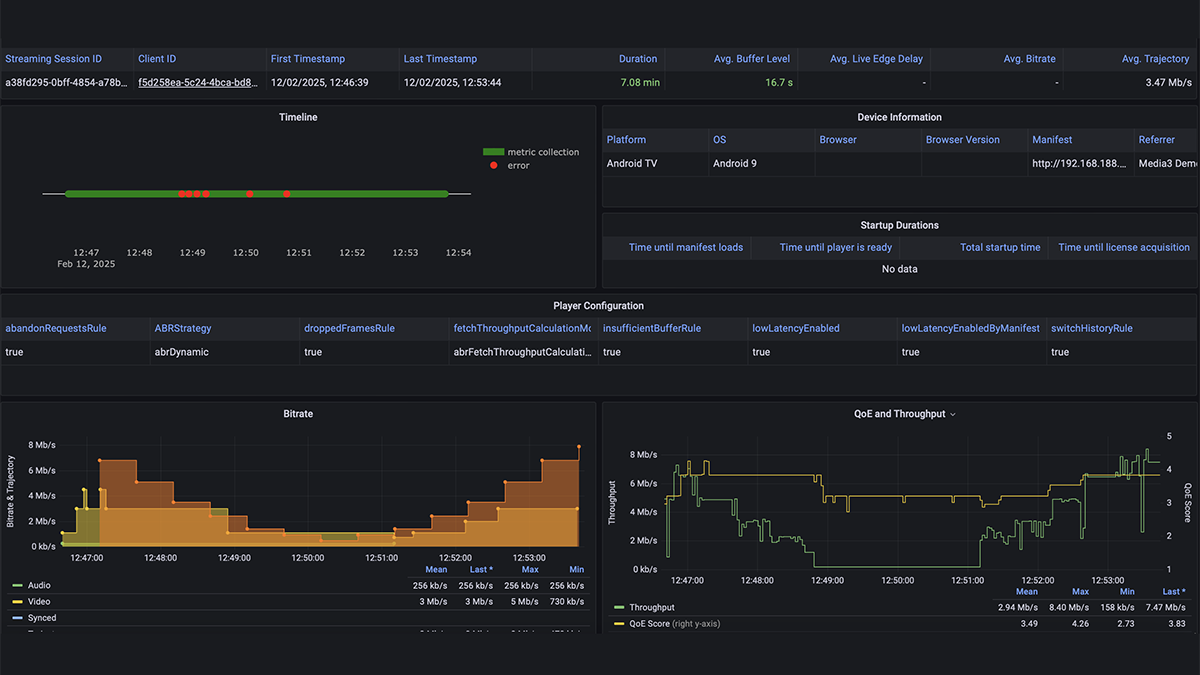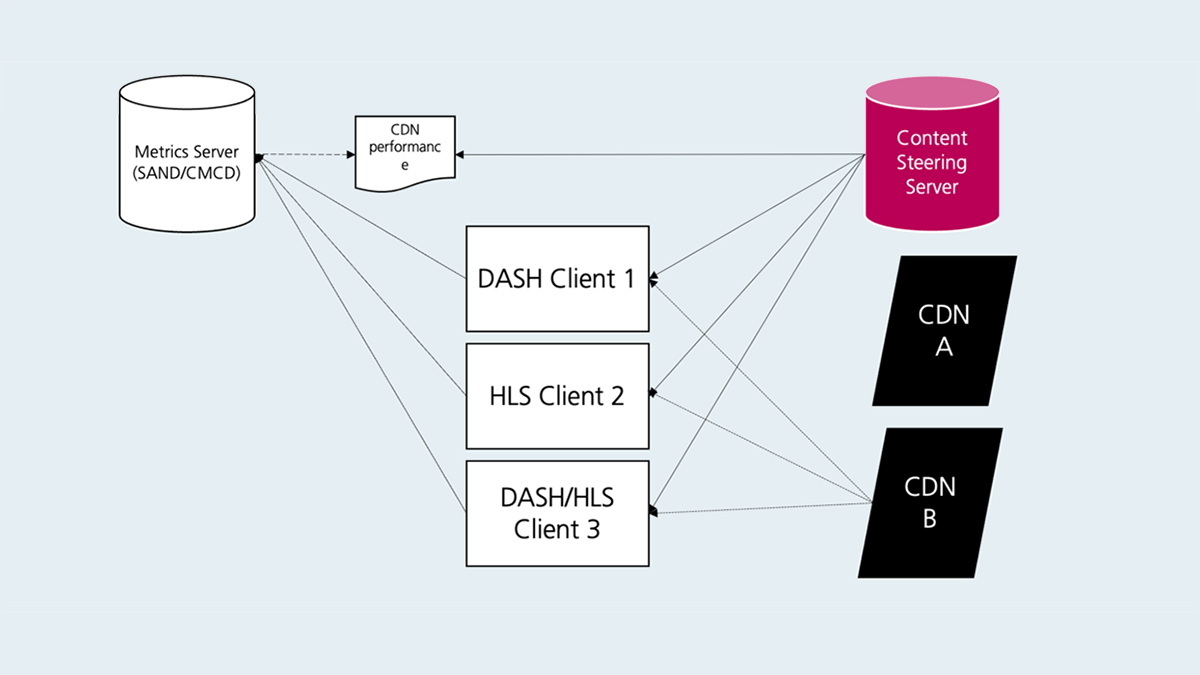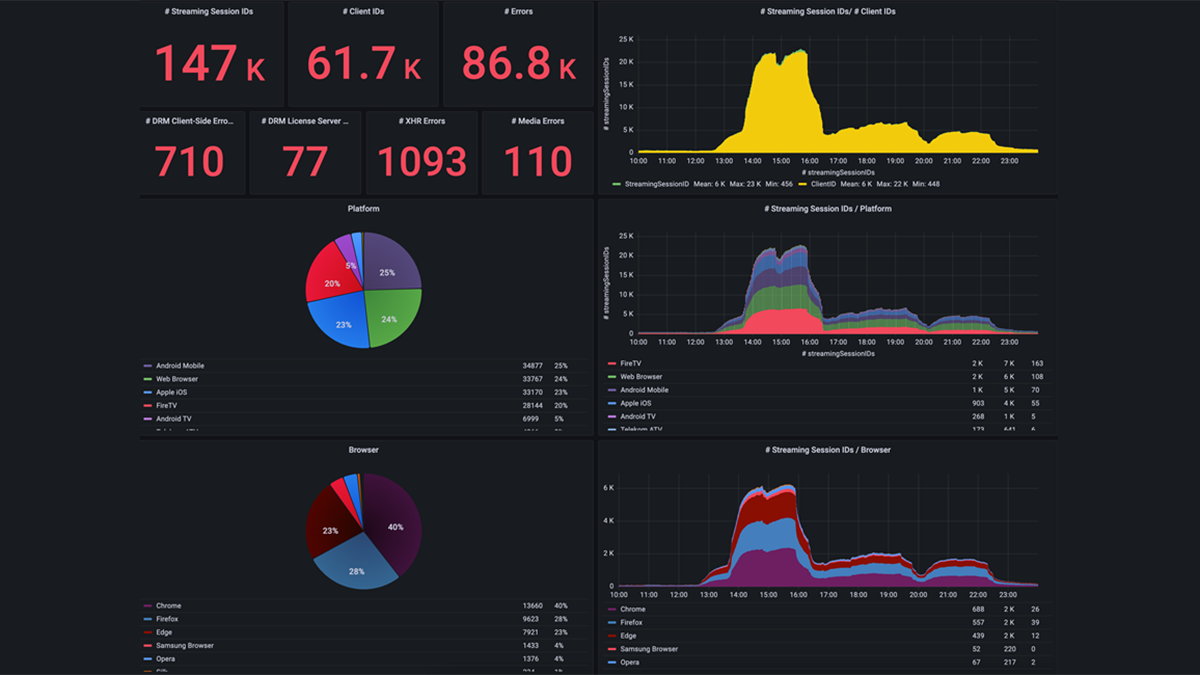Streaming Analytics and Content Steering
Fraunhofer FOKUS's FAMIUM SAND is a comprehensive solution designed for advanced Streaming Analytics and effective Content Steering. It optimizes media streaming quality and efficiency by enabling detailed monitoring of player performance and facilitating intelligent coordination between streaming clients and servers.
Utilizing Server and Network Assisted DASH (SAND), as specified in the MPEG-SAND standard (ISO/IEC 23009-5), FAMIUM SAND establishes standardized communication. The solution further leverages other key industry standards such as Common Media Client Data (CMCD, CTA-5004) and Common Media Server Data (CMSD, CTA-5006) to enrich metric reporting from clients and streamline server-driven coordination.
These capabilities enable crucial functions including comprehensive metric collection from a variety of supported players such as dash.js, hls.js, ExoPlayer, and platforms like iOS and tvOS, as well as enabling shared resource allocation.
This empowers content providers to gain deep insights into Quality of Experience (QoE), effectively debug and troubleshoot streaming sessions, analyze the reliability of VoD/Live and ad-insertion sessions, and dynamically steer content, ultimately enhancing the viewer's experience. The system comprises key components like the FAMIUM SAND-Library for client-side metric reporting, SAND-Adapters for various players, and the FAMIUM SAND-Server for metric collection, analysis, visualization, and client coordination.



